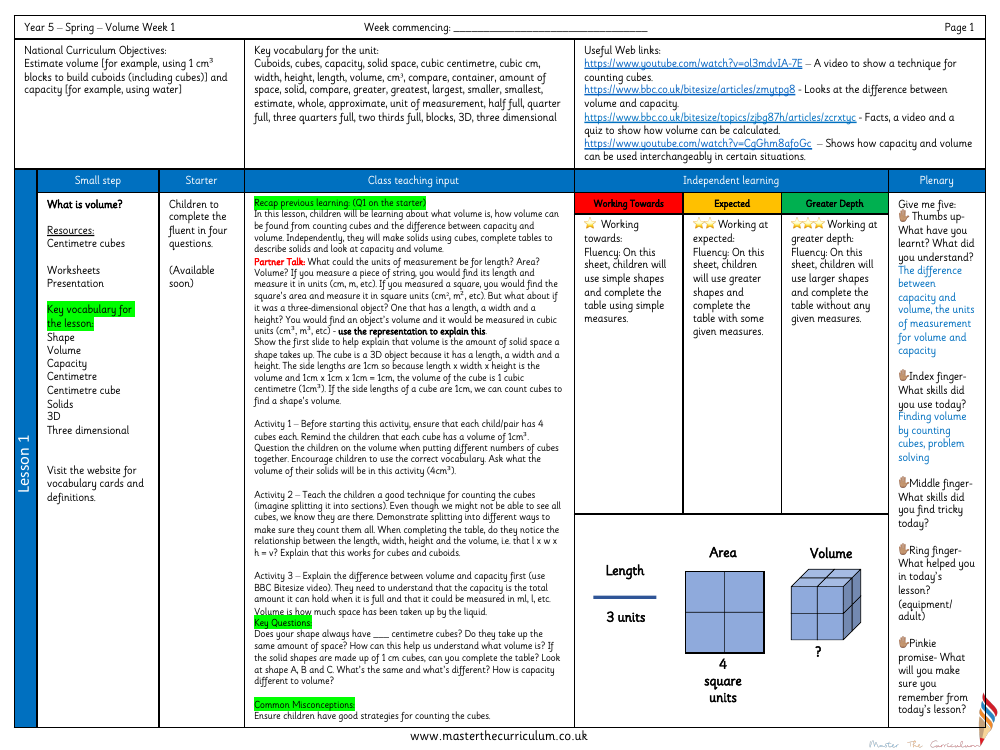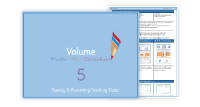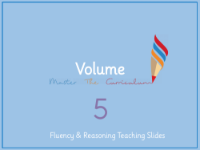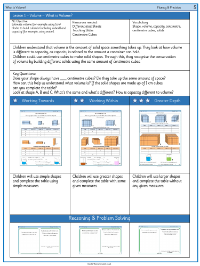Volume - What is Volume - Planning

Maths Resource Description
The Year 5 curriculum introduces students to the concept of volume during their Spring term, focusing specifically on estimating volume using cubic centimetre blocks to construct cuboids, including cubes, and understanding capacity through practical activities with water. Key vocabulary terms such as 'cuboids', 'cubes', 'capacity', 'volume', 'cubic centimetre', and various comparative terms like 'greater' and 'smallest' are essential for the unit. The lesson includes a range of resources like centimetre cubes, worksheets, and a presentation to aid learning. Students will explore the three-dimensional space occupied by solids and learn to differentiate between volume and capacity, using cubic centimetres (cm³) as the unit of measurement for volume.
During the lesson, students will participate in activities designed to deepen their understanding of volume. They will begin by using centimetre cubes to create solids and predict the volume of these shapes. A teaching input will introduce techniques for counting cubes, even those not visible, by imagining the solid split into sections. This will help students comprehend the mathematical relationship between the dimensions of a shape (length, width, and height) and its volume. Further activities will clarify the distinction between volume and capacity, with the former being the space occupied by a solid and the latter being the maximum amount a container can hold. The lesson concludes with a reflective 'Give me five' activity where students consider what they have learned, the skills they have used and found challenging, and the strategies that have supported their learning. Differentiated tasks cater to varying levels of fluency, from simple shapes and measures to more complex tasks without given measures.



